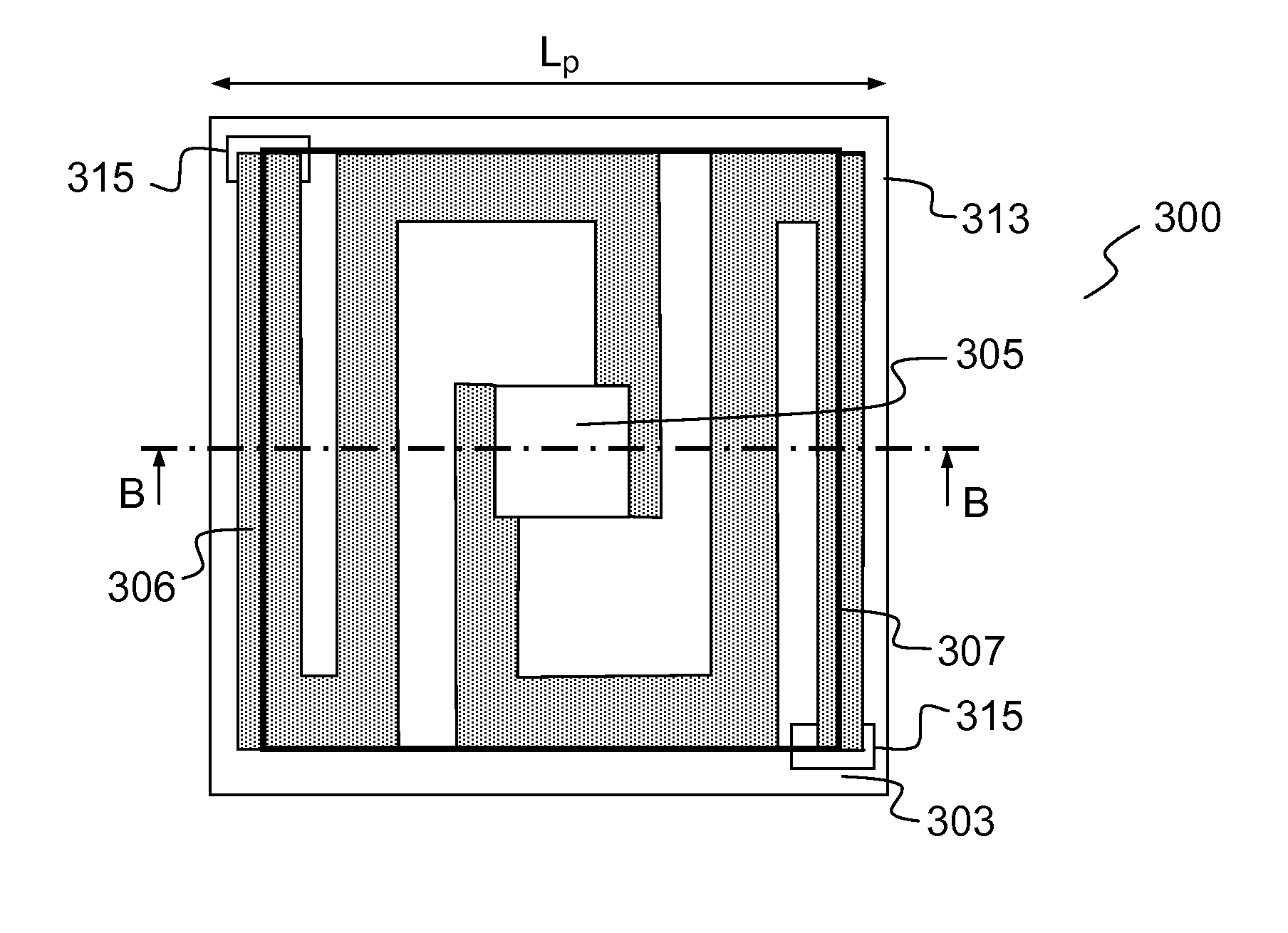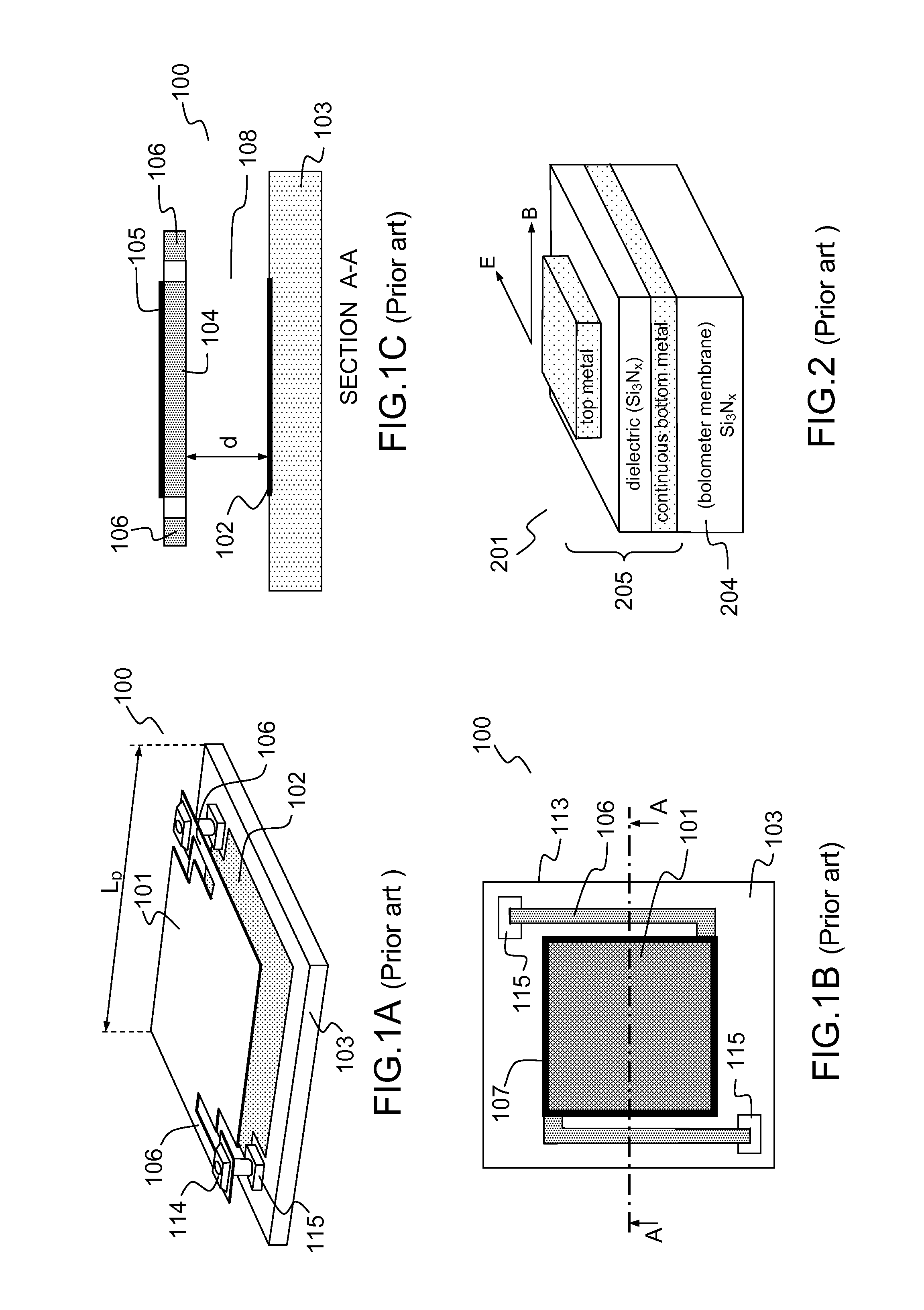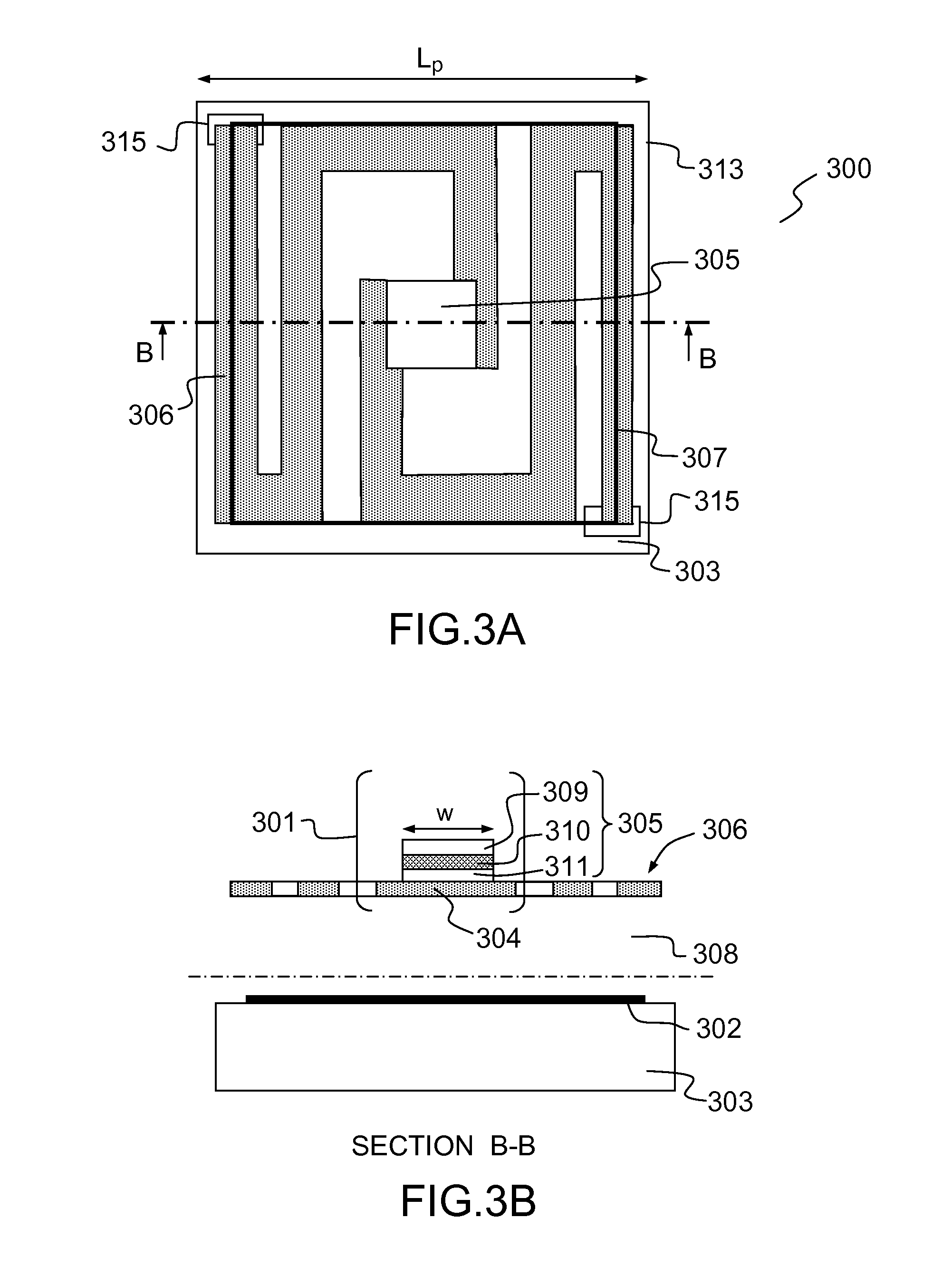Microbolometer array with improved performance
a microbolometer and array technology, applied in the direction of instruments, radiation controlled devices, optical radiation measurement, etc., can solve the problems of increasing the sensitivity of the microbolometer without increasing the response time, and also limited the mass of the thermometric elemen
- Summary
- Abstract
- Description
- Claims
- Application Information
AI Technical Summary
Benefits of technology
Problems solved by technology
Method used
Image
Examples
Embodiment Construction
[0065]FIGS. 3A and 3B respectively illustrate a top view and a cross-sectional view of a first exemplary microbolometer pixel according to the invention for detecting radiation having a wavelength in a given spectral band, for example in the infrared. The elements shown in the figures of the present description are not shown to scale, so as to make the drawings more legible. The microbolometer pixel 300 comprises a membrane (301, FIG. 3B) that is suspended over a supporting substrate 303 by supporting elements. The membrane 301 is formed by an element 305 for absorbing incident radiation and a thermometric element 302 making thermal contact with the absorber preferably over its whole surface or nearly its whole surface in order to warm up homogeneously, but electrically insulated from it, for example by means of an insulating film, for example made of silicon nitride. The microbolometer pixel 300 advantageously comprises arms 306 for thermally insulating the thermometric element, on...
PUM
 Login to View More
Login to View More Abstract
Description
Claims
Application Information
 Login to View More
Login to View More - R&D
- Intellectual Property
- Life Sciences
- Materials
- Tech Scout
- Unparalleled Data Quality
- Higher Quality Content
- 60% Fewer Hallucinations
Browse by: Latest US Patents, China's latest patents, Technical Efficacy Thesaurus, Application Domain, Technology Topic, Popular Technical Reports.
© 2025 PatSnap. All rights reserved.Legal|Privacy policy|Modern Slavery Act Transparency Statement|Sitemap|About US| Contact US: help@patsnap.com



